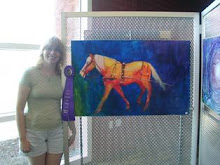My son Weston has craniosynostosis of the right coronal fissure in his skull. Which means the fissure on the right side of his head is prematurely fused. A babies skull fissures are open to allow for head growth. Craniosynostosis can affect any of the skulls fissures. There can be a family link but it is often a random occurrence. If left untreated the fused fissures do not move as the head grows which will cause the head to become deformed.
We where lucky that we discovered his condition very early in his life., because it need to be corrected when the skull is growing, and the spring surgery has to be done when the baby is very young. In Weston's case four months old. The cut off age is different for each case. People often ask us how we discovered that Weston had this condition. Weston was a C section baby, so we were a little worried that his head was not round. His Daddy (Steve) noticed that one eyebrow was flat, and I noticed that one eye looked larger than the other. We asked our Pediatrician Dr Rodgers about it at our first appointment. He said it was most likely just from the birthing process, however that we would check if it looked like it had rounded out by our next appointment. I was having difficulty with breast feeding at first so I we were scheduled to come back the next week, to check to make sure Weston was thriving and I was scheduled to see a lactation specialist right before the pediatricians appointment. She also noticed that his head was still asymmetrical, she had noticed on the day of his birth, as did his Pediatrician but all where thinking that it was form being squished inside of me.
Because there had been no rounding out of Weston's eyebrow our pediatrician decided that it was time to see a specialist, at this time he was thinking that it could be something that could be fixed with a special kind of helmet, as he did not think it was Craniosynostosis because he could feel the fissures through Weston's skin, but with out CT scans and such there was no way of knowing. He sent us to a plastic surgeon named DR. Kilen who as soon as he saw Weston said that he thought it was Craniosynostosis because although he had a flat spot over his forehead his ears matched. He said if it was just misshapen from the birthing process his ear would of also been mashed back. He the explained a very scary sounding surgery, which was the traditional cranioplasty. He was very good at answering all our questions. He referred us to Dr Glazier a neurosurgeon ( who would of thought I would ever have to know a plastic surgeon or a neurosurgeons name) Who gratefully told us that Weston was a candidate for Spring Assisted Surgery which is why less invasive and also lessens the chance of follow up surgeries. Some thing that is quite the norm with the traditional surgery.
The prep in the months before the surgery was kind of cool they put this little sock on his head and taped a little box to that, then using a laser scanner (Like a bar code reader) they scanned his head from all sided as the did a 3-D animation of his head popped up on the screen and the tech could move it any way. Very cool. Then from his CT scan the made an actual 3-D model of his head, which the used to make the surgical springs. When it is all over with I am asking for the skull model after all I know our insurance paid for it, and being the boy that he is he will probably like to see it when he is older.
Spring-assisted cranioplasty they cut a centimeter of his skull out over the effected fissure and use medical springs to help the skull move to the correct position. In four months the springs will come out, and his new “fissure” will close along with the rest in his head, and his head should be nice and round. He will have a big zig zag scar but it will be covered with his hair, when he gits hair that is :) This condition in no way affects his cognitive development.
Subscribe to:
Post Comments (Atom)

No comments:
Post a Comment